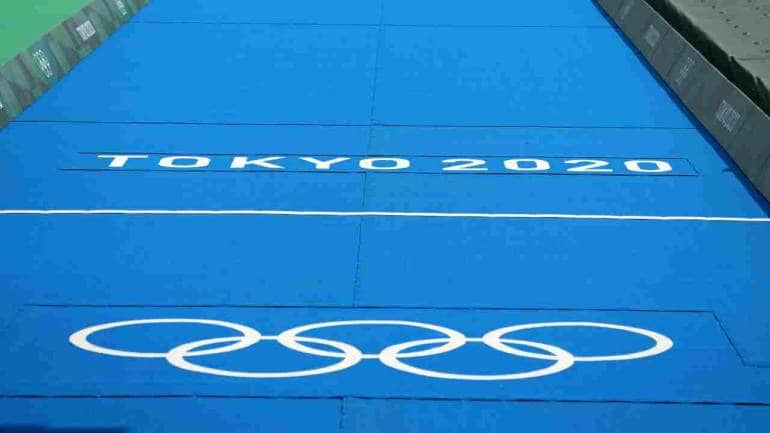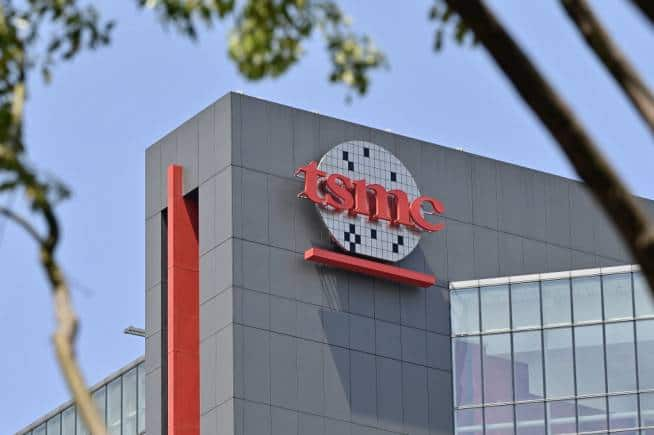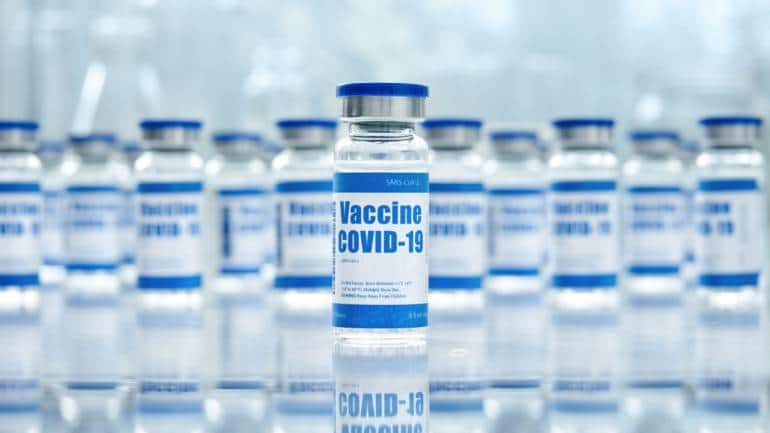Why is Taiwan not called Taiwan at the Olympics?
 ]
]
(Representative image: Reuters)
Taiwan’s star weightlifter Kuo Hsing-chun won gold at the Tokyo Olympics on Tuesday, but when she ascended the podium to receive her medal there was no national flag and no national anthem to greet her.
Taiwan cannot even call itself “Taiwan” at the Games. Instead, it must use the title “Chinese Taipei”, a source of considerable frustration to many Taiwanese.
Here’s why:
What’s in a name?
Taiwan has been given a host of names at the Olympics over the years because of its peculiar international status.
Despite being a self-ruled democracy of 23 million people with its own borders, currency and government, Taiwan’s status remains disputed.
After the 1949 Chinese civil war ended, the losing Nationalists and their Republic of China government fled to Taiwan.
Mao’s winning communist forces founded the People’s Republic of China on the mainland.
Beijing’s communist leadership has never controlled Taiwan. But it still views the island as part of a “one China” and has vowed to seize it one day, by force if it needs.
It tries to keep Taipei isolated on the world stage and balks at any use of the word Taiwan.
Why Chinese Taipei?
That was the name Taipei settled on back in 1981 with the International Olympic Committee (IOC).
It was a compromise that would allow Taiwan to compete in sports without presenting itself as a sovereign nation.
Instead of Taiwan’s red and blue flag, Taiwanese athletes must compete under the “Plum Blossom Banner”, a white flag that carries the Olympic rings.
A traditional flag-raising song – not Taiwan’s national anthem – is played when athletes are on the podium.
Critics say the name is humiliating, noting that other disputed or unrecognised places, such as Palestine, get to use their own name and flag at the Olympics.
What were the previous names?
In 1952, both Taiwan and China were invited to the Olympics. Both governments claimed to represent China but, in the end, Taiwan dropped out.
Four years later, Taiwan joined the Olympics as “Formosa-China” – Formosa (beautiful) was the name Portuguese sailors gave Taiwan in the sixteenth century.
Beijing boycotted those games and quit the International Olympic Committee two years later.
For the 1960 games, Taiwan performed under the name Taiwan at the behest of the IOC.
But Taiwan’s then authoritarian government objected to that name – they wanted to be the Republic of China.
Taiwan participated in two more Olympics as Taiwan in the 1960s, including the 1964 Tokyo Games.
By the 1970s, more countries were starting to diplomatically recognise Beijing over Taiwan.
In 1972, Taiwan took part in the Olympics as the Republic of China for the last time.
Taiwan boycotted the 1976 Olympics after host country Canada demanded it compete as Taiwan instead of ROC.
It was then suspended in 1979 after the IOC recognised Beijing as the representative body for China.
And it was only allowed back in two years later after it agreed to compete as Chinese Taipei, the name it has used ever since.
Why is Taiwan popular again?
It is somewhat ironic that there are now growing calls for Taiwan to be allowed to use the name Taiwan given previous governments disliked that name in the past.
But much has changed in Taiwan since the 1970s.
Since the 1990s, Taiwan has morphed from a dictatorship into one of Asia’s most progressive democracies.
A distinct Taiwanese identity has emerged, especially among youngsters.
A referendum on whether “Chinese Taipei” should be changed was held in 2018, sparking warnings from both the IOC and Beijing.
But the referendum was lost, partly because top athletes opposed the vote, fearful they would be banned from major sporting events.
Current President Tsai Ing-wen – who won a landslide re-election last year – views Taiwan as a de facto sovereign nation and has pushed to use the name Taiwan more.
She wrote a message of thanks to Japan online after a news anchor announced Chinese Taipei as Taiwan during the opening ceremony.
In response, China’s state media tabloid the Global Times blasted Japan for “dirty political tricks”.
Taiwan chipmaker TSMC says profit up 11.2% as demand rises
 ]
]
A factory of Taiwanese semiconductors manufacturer TSMC at Central Taiwan Science Park in Taichung (Image Source: Sam Yeh/AFP)
Taiwan Semiconductor Manufacturing (TSMC) on July 15 said its latest quarterly profit rose 11.2 percent over a year earlier to $4.8 billion as demand for smartphones and consumer electronics increased. It is the biggest contract manufacturer of processor chips for Apple Inc. and other global brands.
Sales in the three months ending June 30 rose 19.8 percent to $13.3 billion, said the company, headquartered in Hsinchu, Taiwan.
TSMC also said it expects faster growth as next-generation telecoms and computing generates demand for chips. A shift to working remotely in response to the coronavirus pandemic helped propel demand for communications technology.
The company, whose customers also include Qualcomm Inc., said in April it plans to invest $100 billion over the next three years to expand manufacturing and research and development.
Most semiconductors used in smartphones, medical equipment, computers and other products are made in Taiwan, South Korea and China. Shortages have cropped up as supply failed to keep up with demand.
TSMC operates a semiconductor wafer fabrication facility in Camas, Washington, and design centers in San Jose, California, and Austin, Texas.
It has announced plans to invest $3.5 billion in a second US manufacturing site, in North Phoenix, Arizona, as concern grows over heavy American reliance on Asian sources for high-tech components.
Japan to provide 1 million more COVID vaccine doses to Taiwan
 ]
]
So far, four COVID-19 vaccines have been given Emergency Use Authorisation (EUA) in India - AstraZeneca’s Covishield, Covaxin, Sputnik V and Moderna.
Japan will send a third batch of donated COVID-19 vaccines to Taiwan this week, Japanese Foreign Minister Toshimitsu Motegi said on Tuesday, in a further show of support for the Chinese-claimed island which is now ramping up inoculations.
Motegi told reporters that the AstraZeneca Plc shots would be sent on Thursday, which would bring the country’s total donations to Taiwan so far to almost 3.4 million doses.
The first batch was sent in June, followed by a second donation earlier this month. Taiwan’s Foreign Ministry expressed its thanks, especially at a time when Japan is facing its own serious coronavirus situation.
“The friendship between Taiwan and Japan is unwavering. The Foreign Ministry once again thanks our partners in freedom and democracy for their warm assistance and strong support,” it added. Taiwan has complained that Chinese interference blocked a deal earlier this year for it to get vaccines from Germany’s BioNTech SE, charges Beijing has denied, but since then donations have rolled in for the government.
Last month the United States donated 2.5 million Moderna Inc doses, while the Baltic state of Lithuania has pledged 20,000 shots of AstraZeneca’s vaccine. Taiwan is rapidly expanding its vaccination programme, though so far only around one-tenth of its 23.5 million people have received at least one of the two shot regimen. But the government has millions of doses on order.
COVID-19 Vaccine Frequently Asked Questions View more How does a vaccine work? A vaccine works by mimicking a natural infection. A vaccine not only induces immune response to protect people from any future COVID-19 infection, but also helps quickly build herd immunity to put an end to the pandemic. Herd immunity occurs when a sufficient percentage of a population becomes immune to a disease, making the spread of disease from person to person unlikely. The good news is that SARS-CoV-2 virus has been fairly stable, which increases the viability of a vaccine. How many types of vaccines are there? There are broadly four types of vaccine — one, a vaccine based on the whole virus (this could be either inactivated, or an attenuated [weakened] virus vaccine); two, a non-replicating viral vector vaccine that uses a benign virus as vector that carries the antigen of SARS-CoV; three, nucleic-acid vaccines that have genetic material like DNA and RNA of antigens like spike protein given to a person, helping human cells decode genetic material and produce the vaccine; and four, protein subunit vaccine wherein the recombinant proteins of SARS-COV-2 along with an adjuvant (booster) is given as a vaccine. What does it take to develop a vaccine of this kind? Vaccine development is a long, complex process. Unlike drugs that are given to people with a diseased, vaccines are given to healthy people and also vulnerable sections such as children, pregnant women and the elderly. So rigorous tests are compulsory. History says that the fastest time it took to develop a vaccine is five years, but it usually takes double or sometimes triple that time. View more Show
Taiwan’s own relatively small domestic COVID-19 outbreak has now generally been brought under control, though there remain sporadic community infections.